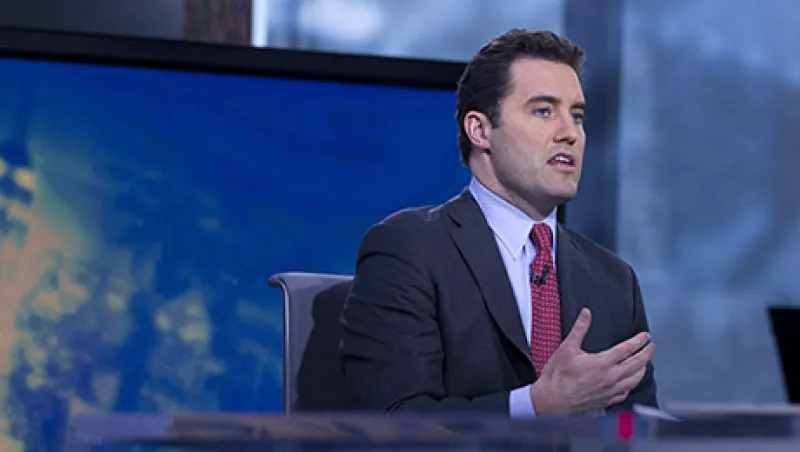The recent bout of volatility sent yields on junk bonds spiking to a three-year high relative to U.S. Treasuries. Does that signal an end to the six-year rally in U.S. high-yield debt? Not quite, say money managers. Although they don’t expect a return to the halcyon days of 2014, they see plenty of good value available.
“The market already has priced in a higher level of default,” says James Keenan, global head of fundamental credit for BlackRock in New York. Modest but steady economic growth, low inflation and a slow pace of interest rate increases by the Federal Reserve, when and if the central bank actually starts tightening, provide a positive backdrop for the market, he says. In addition, “the yield premium is high, and U.S. companies are still good credit stories. We are starting to like the asset class and adding exposure to it.”
To be sure, he and others don’t recommend buying indiscriminately. “You have to be disciplined, because in the late stages of a credit cycle, you see a big dispersion in industrial companies,” Keenan says, noting troubles facing the energy, materials and mining industries. “We have seen that in the last few months. It’s about picking the right names.”
The high-yield market’s average spread over Treasuries, which touched a postcrisis low of 335 basis points in June 2014, reached 683 basis points on October 2 before shrinking back. The spread stood at 529 as of October 28. Veteran high-yield bond analyst Martin Fridson, now chief investment officer at Lehmann Livian Fridson Advisors, puts fair value for the spread at 571 basis points.
It’s no wonder that Michael Collins, co-manager of the Prudential Total Return Bond Fund in Newark, New Jersey, views the recent spread widening as “more of a value opportunity than the beginning of the end.” The high-yield market has a historical cycle in which companies begin to take on more debt and keep doing so until yields rise significantly. “Then the market pushes back, and they [issuers] change their behavior, getting religion,” he says. “We may be at a near-term inflection point now, with the market having pushed back.” Rising yields have been a positive sign for the market, Collins says: “It’s a warning to issuers not to get over their skis and overleverage their companies.”
The widened spread “makes valuations much more compelling,” Collins says. The Barclays U.S. Corporate High-Yield Bond index stands at 7.49 percent, compared with 2.20 percent for the ten-year Treasury. “That’s a big deal — almost a fourfold difference. People do the math in their head,” Collins says, adding that the spread may not surpass 700 basis points for quite some time.
As for the economy, Collins expects growth of 1.5 to 2 percent for the next two to three years, with inflation staying below 2 percent and the Fed not raising the federal funds rate, now stuck at zero, even as high as 2 percent. That’s almost a Goldilocks scenario for the high-yield market, he says, adding, “we’ve been a buyer on dips.”
Fridson’s analysis, which is based on current spreads and historical default rates, suggests the market expects a default rate of 5.4 percent over the next 12 months. That compares with an average default rate of 4.7 percent since 1982, and 2.6 percent for the 12 months through September. Usually, once the default rate rises above that 4.7 percent average, it stays above the average for four to five years, peaking at 10 percent in two years before gradually sliding back down, Fridson explains.
Such a scenario would justify a bearish stance, Fridson says, but the exception to that pattern came in 1986, when oil prices plunged — just as they have in the past year. “In 1986 the default rate got to 6 percent, but then receded for a couple years before escalating again,” he continues. “Now is something of a replay.”
Analysts agree that the problems in the energy, mining and materials sectors, with commodity price indexes recently hitting 14-year lows, will elevate default rates in coming months. “I think we’ll see a surge in the default rate, but I don’t think we’ll reach the peak default rate anytime soon,” Fridson says. In addition, central banks are “going all out” in their easing campaigns, with the Fed moving very slowly to raise U.S. interest rates and the European Central Bank and the People’s Bank of China signaling even easier policies going forward. And that, Fridson points out, provides a lift to corporate balance sheets.
So it might not be time to turn negative on high-yield just yet.
Get more on fixed income.







